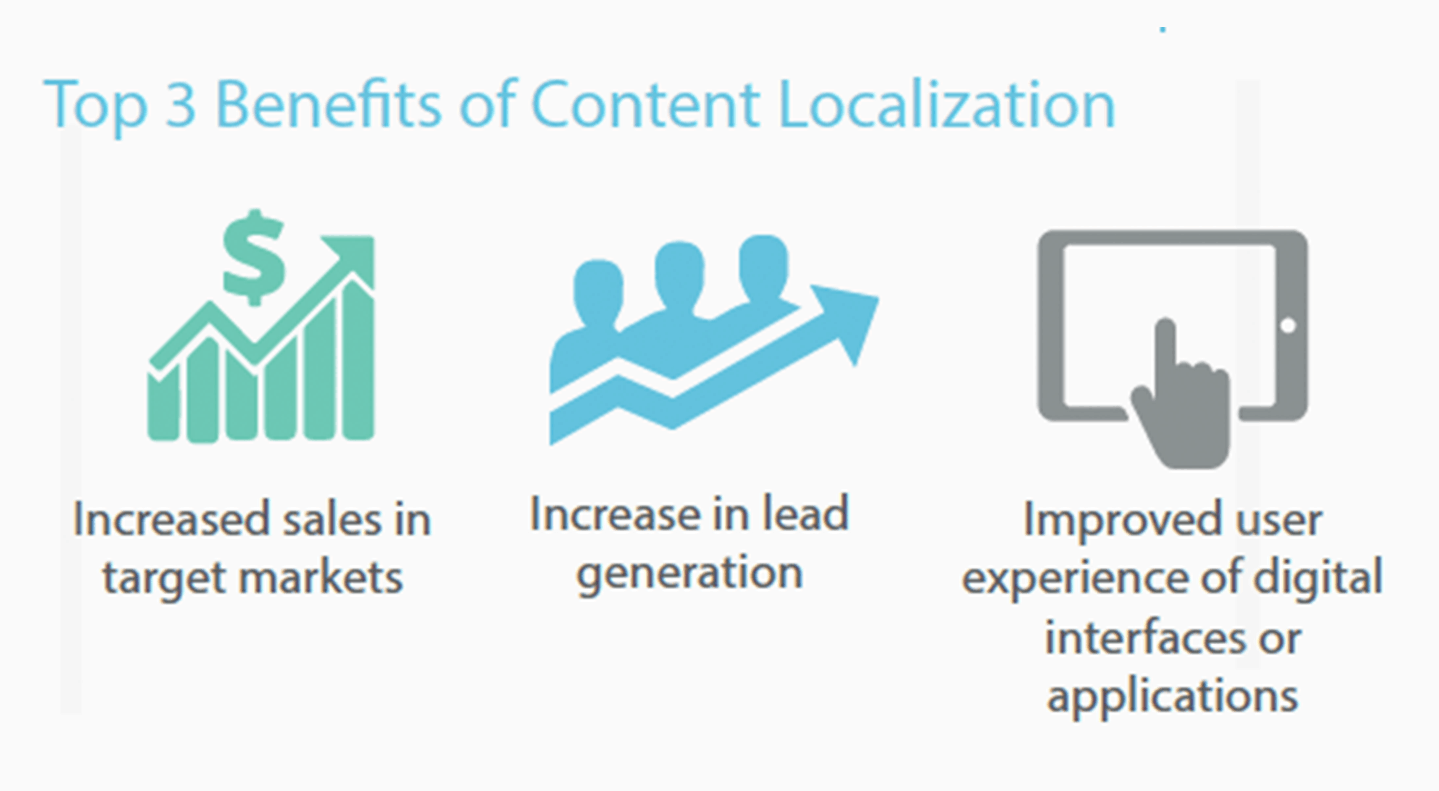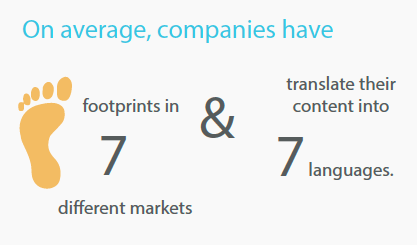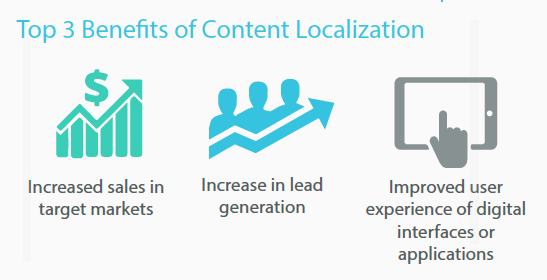
New research shows that marketers are investing more in translation and localization of their content for international audiences — here’s why.
When it comes to going global, marketers are pumping dollars into their translation and localization efforts. According to research from 2016, the total amount that companies invested in translation and localization increased from $26 billion in 2010 to $38 billion in 2015.
Why does localization matter so much to companies these days? Localization – the process of adapting a product or content to a specific locale or market- can make or break a company’s success abroad. It differentiates brands that communicate effectively with international markets from other brands that remain foreign and inaccessible to international audiences. A dedicated investment in content that speaks to an audience’s language and aligns with their cultural norms can help companies win new market share around the world.
According to recent research, this trend is continuing at full speed. Smartling, a translation technology company based in New York City, partnered with IDG Research to find out what top marketing executives have planned for content localization. Researchers asked over 300 marketing decision-makers across the United States, the United Kingdom, Germany, and France about the scope and momentum of their content localization efforts now and in the next 12 months. They’ve summed up their findings in a new report, Catalyzing Growth and Revenue Opportunities With Content Localization.
What can marketers take away from this research? Here are seven key findings on translation and localization trends in 2020:
-
-
- On average, companies have international footprints in 7 different markets and translate their content into 7 different languages. In addition to Europe’s multilingual markets, emerging markets in Asia and Africa have provided new opportunities abroad, attracting more companies to promote their brand in different languages. To enter new markets successfully, they are translating external-facing content into the native languages of their international markets.
- In the next 12 months, these companies plan to expand into 7 new markets on average. Ambitious companies are planning to double the size of their international market base, of which 88% require translation services for their new markets. Such a feat will require smart ways to streamline the process, including the use of technology to automate content workflows, centralize translation projects, and provide data to optimize the go-to-market strategy for translated content.
- The top benefit of content localization: Increased sales in target markets. Translated content doesn’t just look better to international audiences. Companies actually see clear ROI from their content localization efforts, directly impacting their bottom line. Customers appreciate the time companies take to speak in their native language. As the mantra goes, people will do business with those people they know, like, and trust.
- Over half of companies find the content localization process to be too manual and needs to be more automated. Emailing spreadsheets back and forth with translators gets complex to manage, especially when scaling up international operations. For those companies that will be in 14 international markets by the end of 2018, keeping tabs of at least 14 translators for 14 different languages will be challenging without the right automation tools in place.
- The top challenge of content localization: Slow time to market. Recognizing ROI from international markets becomes a challenge when source content just isn’t getting translated in a timely manner. When speed is the name of the game, technology can help to decrease go-to-market time for translated content from 2 days to 10 minutes.
- 94% of companies plan to increase their localization expenditures. Most companies have expanded the line item in their 2018 budgets for localization efforts to supplement their global expansion efforts. Investments in global marketing are becoming inseparable from investments in localization.
- A bigger footprint means more opportunities for localization of content services. The top 5 types of content that companies are localizing are their website, social media, digital, video and technical information. The most successful localization efforts cover these crucial digital marketing channels and the essential steps of the buyer’s journey on the website.
- On average, companies have international footprints in 7 different markets and translate their content into 7 different languages. In addition to Europe’s multilingual markets, emerging markets in Asia and Africa have provided new opportunities abroad, attracting more companies to promote their brand in different languages. To enter new markets successfully, they are translating external-facing content into the native languages of their international markets.
-
Welcome to Austin Visuals. We hope you’re enjoying this article! While you’re here, please take the opportunity to browse the visual stories and solutions we’ve created for our clients. If you have an article you’d like us to publish, email us at [email protected].
Based on the research results, continued global expansion and increased investment in localization remains a top priority for marketing executives. Most notably, 94% of multinational companies plan to increase their localization spending in 2018 and plan to expand into 7 new markets on average. Companies are moving fast to tap into markets around the world.
At the same time, many of them are looking for ways to improve their localization process and most effectively communicate their brand to new markets.
Juliana Pereira, Vice President of Marketing at Smartling, explains this hurdle that even the most successful brands encounter: “Companies active in multiple geographic markets understand the many benefits localized content can deliver, but not all know how to best leverage this powerful competitive differentiator. In today’s global business environment, it’s all about enhancing, tailoring and personalizing customer experiences. Providing translation in the local language goes the extra mile to show your customers that your brand speaks their language, quite literally.”
As global companies expand their international footprints, there is broad consensus on the immense value of localization to achieving their global market share, as proven by their localization ROI. As expected, international audiences respond positively to content that resonates with their language preferences. Companies will want to keep these key localization statistics in mind to polish up their localization strategies to ensure successful growth in the new year.
Download Smartling’s full trends report, Catalyzing Growth and Revenue Opportunities With Content Localization.
Want to learn how translation technology can help companies increase the quality of their translations and go to market faster? Smartling provides a translation management solution for companies seeking to accelerate growth from international markets. Get in touch with a Smartling representative to learn more.
Written by Smartling
Austin Visuals is a full-service 3D, 2D, Motion Graphics, Live Video, E-learning, Digital Publication studio. We’ve been creating digital magic nationwide for a decade. We work with companies of all sizes from startup to standout. Call us for a free consultation. 512-591-8024 [email protected]







